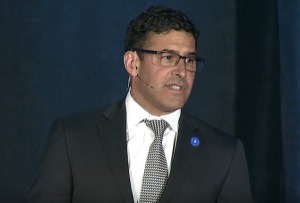by
Christina Hwang, Contributing Reporter | April 11, 2017
Dr. Marc Harrison, president and CEO of Intermountain Healthcare, a 22-hospital not-for-profit health system based in Salt Lake City, recently hosted an online discussion of the facility's goals and accomplishments.
“From an aspirational standpoint, I have never met a group of people who are willing to sacrifice to achieve a mission like the folks at Intermountain,” said Harrison, who stepped into his current role in October of 2016. “Our mission is to help people live the healthiest lives possible. Our actions and behaviors support that every day and we continue to strive to get better.”
By way of example, he pointed to Intermountain Medical Center, one of the health system's 22 locations, and its track record with treating stroke victims. The national average for administering clot-breaking drugs is about an hour, but at Intermountain these drugs are administered in an average of 35 minutes, according to Harrison.



Ad Statistics
Times Displayed: 57392
Times Visited: 1683 Ampronix, a Top Master Distributor for Sony Medical, provides Sales, Service & Exchanges for Sony Surgical Displays, Printers, & More. Rely on Us for Expert Support Tailored to Your Needs. Email info@ampronix.com or Call 949-273-8000 for Premier Pricing.
In terms of patient experience ratings, the national average in 2015 was 72 and the overage average at Intermountain was 77.
Providing education to caregivers is another factor that defines Intermountain and how it measures success. On a yearly basis, $36 million goes to educating caregivers-in-training and in 2016, 3,000 nurses were trained.
“We provide money to diversity candidates within nursing and last year, 200 candidates got financial support from us,” Harrison reported. “In the spirit of developing our caregivers, last year we spent $6.5 million in tuition reimbursement helping our caregivers better themselves so they can better provide for the patients who are trusting us.”
Intermountain has a zero-harm initiative where participants are trained on their roles and responsibilities at Intermountain. Currently, 28,000 caregivers have been trained, and there has been a 26 percent increase in problem reporting and a 30 percent decrease in serious safety events.
A problem that the system is actually looking to improve upon is depicted in the image below.
Courtesy: Intermountain Healthcare
“This is a catheter associated bloodstream infection. These are IVs that go into big veins. They can get infected, and hurt or even kill patients,” Harrison said. “Currently, we’re in about the 35th percentile and that’s not where we want to be, and that’s not where we will be next year. I want you to know that we know that health care is always aspirational.”

